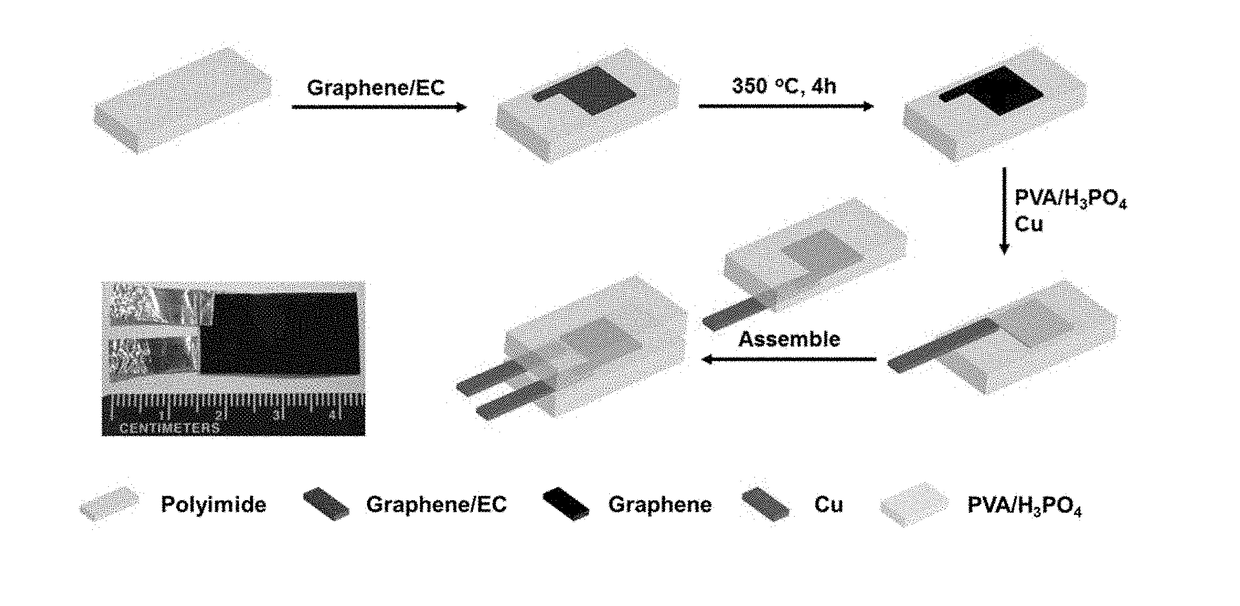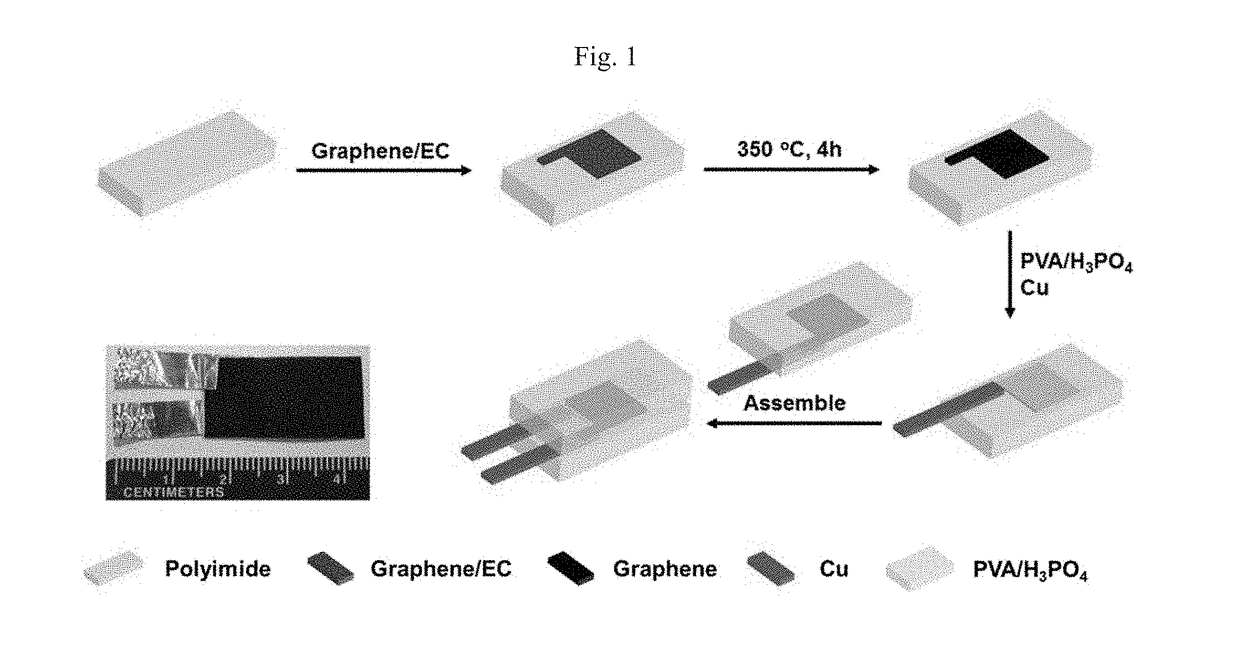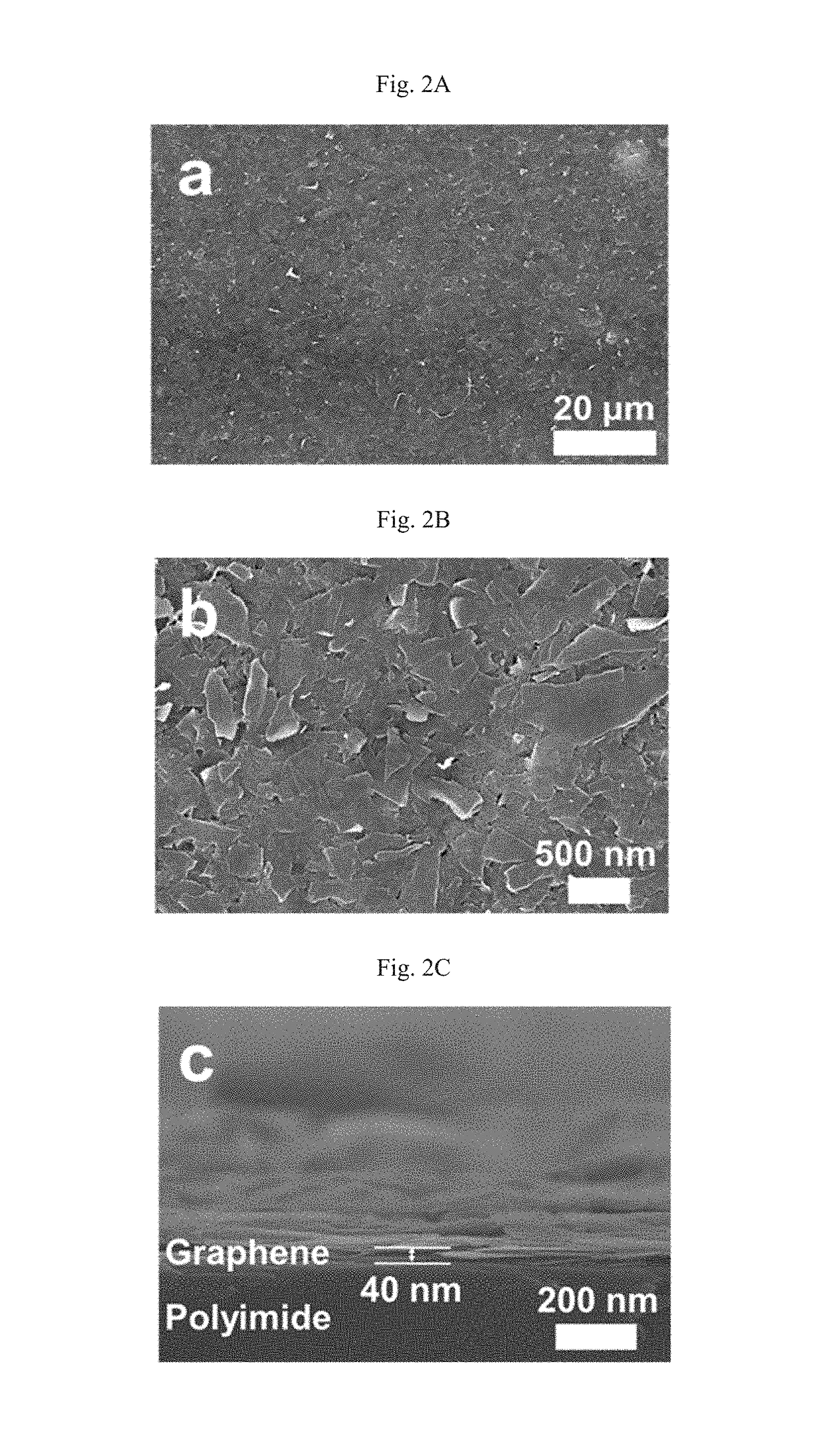High-Performance Solid-State Supercapacitors and Microsupercapacitors Derived from Printable Graphene Inks
a solid-state supercapacitor and graphene ink technology, applied in the direction of electrophoretic coatings, electrically-conductive paints, applications, etc., can solve the problems of limiting the cost potential and versatility of devices, synthesis, post-reaction treatment, and instability of go, so as to achieve rapid and scalable preparation methods, the effect of reducing the cost potential
- Summary
- Abstract
- Description
- Claims
- Application Information
AI Technical Summary
Benefits of technology
Problems solved by technology
Method used
Image
Examples
example 1
[0052]Synthesis of G / EC: Graphene was produced by high shear mixing of graphite in a solution of ethyl cellulose and ethanol. Ethyl cellulose (EC, Sigma-Aldrich, 4 cP grade measured in 80:20 toluene:ethanol at 5% wt., 48% ethoxy) was dissolved in ethanol (Koptec, 200 proof) at a concentration of 10 mg / mL. Flake graphite (Asbury Graphite Mills, Grade 3061) was added at a concentration of 200 mg / mL. This mixture (˜1 L total volume) was mixed with a high shear mixer (Silverson L5M-A) for 2 hours at 10,230 rpm in an ice water bath. Unexfoliated graphite flakes were removed by centrifugation (Beckman Coulter Avanti® J-26 XPI centrifuge) at 7,500 rpm for 5 minutes and then 4,000 rpm for 105 minutes. The supernatant was collected and flocculated by mixing with an aqueous solution of NaCl (Sigma-Aldrich, 0.04 g / mL) in a 16:9 wt. ratio. Centrifugation at 7,500 rpm for 6 minutes was performed to collect the flocculated G / EC solid, and the ethanol and excess EC was discarded. Finally, the G / EC...
example 2
[0053]Fabrication of the sandwich-structured SCs and MSCs: Graphene supercapacitors were prepared by spin-coating, blade-coating processes and inkjet printing. Various other graphene / ethyl cellulose ink compositions can be prepared and utilized in conjunction with the present invention, such compositions and methods of the sort described in co-pending application Ser. No. 14 / 756,304 filed on Aug. 24, 2015 and Ser. No. 14 / 699,822 filed on Apr. 29, 2015, each of which is incorporated herein by reference.
example 2a
[0054]For blade-coating thick graphene films, G / EC powder was dispersed in ethanol and terpineol by bath sonication. Excess ethanol was removed by heating to yield a nominal ink composition of 20% w / v G / EC in terpineol. This paste was doctor-bladed onto 125 μm thick polyimide substrates to form uniform films. Following EC removal by thermal annealing, the graphene film thickness was ˜2000 nm.
PUM
| Property | Measurement | Unit |
|---|---|---|
| Thickness | aaaaa | aaaaa |
| Flexibility | aaaaa | aaaaa |
| Metallic bond | aaaaa | aaaaa |
Abstract
Description
Claims
Application Information
 Login to View More
Login to View More - R&D
- Intellectual Property
- Life Sciences
- Materials
- Tech Scout
- Unparalleled Data Quality
- Higher Quality Content
- 60% Fewer Hallucinations
Browse by: Latest US Patents, China's latest patents, Technical Efficacy Thesaurus, Application Domain, Technology Topic, Popular Technical Reports.
© 2025 PatSnap. All rights reserved.Legal|Privacy policy|Modern Slavery Act Transparency Statement|Sitemap|About US| Contact US: help@patsnap.com



